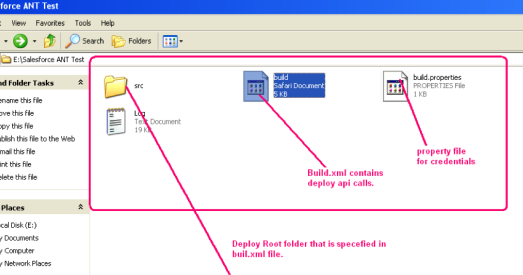

- #Add the bin directory to your path. ant migration tool mac update#
- #Add the bin directory to your path. ant migration tool mac full#
i18nCreatorĪ command-line tool that generates scripts to help with static string internationalization, along with sample properties files. Also, this build.xml file serves as an excellent base to grow on as your project takes on more dependencies or requires more specific build targets (for example, unit testing targets). Notice also that there are some properties that you might like to extract to a build.properties file, such as the gwt.sdk property, to make it easier to share the same build script with teammates who may have different configurations on their development machines. These will help to resolve the libraries needed at compile-time and runtime to compile and deploy your application, respectively. You will notice that the build.xml file contains a number of rules to compile and deploy your application.
The other files implement a small sample GWT application. FooTest-prod.launch is a launch configuration for Eclipse that will run the project’s tests in production mode. FooTest-dev.launch is a launch configuration for Eclipse that will run the project’s tests in development mode. Foo.launch is a launch configuration for Eclipse. Running ant build from the command-line translates the Java app to JavaScript, creating a web folder called foo in the war directory. Running ant devmode from the command-line brings up the new application in superDevMode. ~/Foo> webAppCreator -junit /path/to/junit-3.8.1.jar -out foo Note: because of a bug in GWT-2.7.0, it generates a broken pom.xml, hence, you have to modify the block to include the parameter: Ĭreating an Ant project.  The other files in src implement a small sample GWT application, with the appropriate web.xml file and tests. Running mvn package from the command-line translates the Java app to JavaScript, creating a war file into the target directory. Running mvn gwt:run from the command-line brings up the new application in superDevMode. ~/Foo> webAppCreator -out foo -templates maven,sample,readme Since nowadays Maven is widely used and importing maven projects in IDE is easier, it’s better that you select it for your new GWT projects. Based on your selection you will get a different build script, and a different folder structure. You can select either ant or maven build system. Equivalent to specifying ‘ant’ in the list of templates. (defaults to OFF)ĭEPRECATED: Create an ant configuration file. Equivalent to specifying ‘maven’ in the list of templates. Specifies the path to your junit.jar (optional)ĭEPRECATED: Create a maven2 project structure and pom file (default disabled). The directory to write output files into (defaults to current) Specifies the template(s) to use (comma separeted). Ignore any existing files do not overwrite. webAppCreator overwriteFiles] ignoreExistingFiles] \ Use the files generated by these scripts as a starting point for building your own project. webAppCreatorĪ command-line tool that generates a starter application and scripts for launching development mode and compiling to JavaScript. You will need to log out of your account and log back in before the PATH setting takes effect.
The other files in src implement a small sample GWT application, with the appropriate web.xml file and tests. Running mvn package from the command-line translates the Java app to JavaScript, creating a war file into the target directory. Running mvn gwt:run from the command-line brings up the new application in superDevMode. ~/Foo> webAppCreator -out foo -templates maven,sample,readme Since nowadays Maven is widely used and importing maven projects in IDE is easier, it’s better that you select it for your new GWT projects. Based on your selection you will get a different build script, and a different folder structure. You can select either ant or maven build system. Equivalent to specifying ‘ant’ in the list of templates. (defaults to OFF)ĭEPRECATED: Create an ant configuration file. Equivalent to specifying ‘maven’ in the list of templates. Specifies the path to your junit.jar (optional)ĭEPRECATED: Create a maven2 project structure and pom file (default disabled). The directory to write output files into (defaults to current) Specifies the template(s) to use (comma separeted). Ignore any existing files do not overwrite. webAppCreator overwriteFiles] ignoreExistingFiles] \ Use the files generated by these scripts as a starting point for building your own project. webAppCreatorĪ command-line tool that generates a starter application and scripts for launching development mode and compiling to JavaScript. You will need to log out of your account and log back in before the PATH setting takes effect. For example, if you unpacked GWT in /home/user/gwt-2.0.0/, update your profile as follows: PATH=$PATH:/home/user/gwt-2.0.0/
At the end of the of the variable value, add a semicolon followed by the full path to the directory where you unpacked the GWT distribution (e.g., C:\gwt-2.0.0\).Įdit a file named. From the user variables list, select Path and click Edit. 
Click the Environment Variables button.Right-click on My Computer and select Properties.To do this, in the PATH environment variable, identify the directory in which you unpacked the GWT distribution. To easily invoke the command-line tools without entering their full path names, add them to your system command search path. The GWT includes a set of tools that can be run from the command-line to simplify and speed up common tasks.







 0 kommentar(er)
0 kommentar(er)
